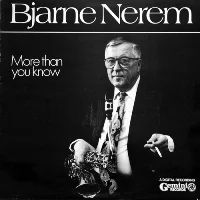
Styles: Saxophone Jazz
Year: 1993
File: MP3@320K/s
Time: 54:29
Size: 125,1 MB
Art: Front
(4:54) 1. Still In The Band
(6:18) 2. See The Day
(4:02) 3. Handyman
(5:46) 4. Tidal Wave
(4:50) 5. My River
(5:12) 6. I Feel Fine
(6:10) 7. Night Thing
(6:20) 8. Brotherhood
(5:07) 9. Distant Lover
(5:46) 10. When I Fall In Love
Ronnie Laws is an award-winning tenor saxophonist and composer whose career has, since the early 1970s, straddled the worlds of jazz and R&B. Since 1975 he has placed seven albums in the Top 200 including his 1975 Blue Note debut Pressure Sensitive as well as tracks and albums in no less than six other categories. He has worked as an in-demand session man and live musician with a who's-who of jazz and R&B greats including Ramsey Lewis, Gregory Porter, B.B. King, George Duke, Quincy Jones, Stanley Jordan, and dozens more. Laws, the younger brother of flutist Hubert Laws, is the product of a musical family. Two of his sisters, Debra and Eloise, are also professional singers. Born in Houston, Texas, Laws began teaching himself to play the alto saxophone at the age of 11. While his first love was baseball, a serious eye injury ended those dreams early and he focused on music, which he studied in high school, at Stephen F. Austin State, and later at Texas Southern University, where he switched to tenor, earned a degree, and developed a progressive mastery and technique. In 1970 he moved to Los Angeles in pursuit of a musical career. He woodshedded with the Jazz Crusaders (Hubert had played with them in the '50s) and especially Hugh Masakela. His early gigs in the city were with pianist Walter Bishop, Jr., Doug Carn, and on his brother's CTI recordings. In 1972, he joined Earth, Wind & Fire for 18 months and was, in effect, its first saxophonist, playing both tenor and soprano; he played on the album Last Days and Time. In Los Angeles, he made the acquaintance of Donald Byrd.
The two became friends and Byrd got Laws signed to Blue Note. His 1975 debut, Pressure Sensitive, got serious radio play despite landing at 73, and yielded the enduring jazz-funk classic "Always There." It has been covered and/or sampled by well over 100 artists. Laws was on his way. With his other '70s work 1976's Fever, Friends and Strangers, and Flame which boasted his first cross continental 12" hit "All for You," Laws established himself as a workhorse studio musician, playing on recordings by Ramsey Lewis, his sister Eloise, Arthur Adams, Gene McDaniels, and Wayne Henderson, to name a few. In the '80s, Laws was an international festival and club draw. Three singles from his first three albums all went gold, as did their respective long-players. Despite the fact that he is often characterized strictly as a "smooth jazz" artist, Laws might be the first instrumentalist to score hits in the emerging "quiet storm" subgenre of R&B. In the '80s, Laws started to showcase his voice along with his saxophone playing on tracks like the title cut to Every Generation (1980), "Stay Awake" (from 1981's Solid Ground), and "Mr. Nice Guy" (1982). "Stay Awake" spent 18 weeks on the R&B chart, and reached number 19. He jumped around from United Artists to Capitol to Columbia throughout the decade, issuing memorable albums such as 1983's Mr. Nice Guy and 1987's All Day Rhythm. His records began to chart on radio R&B lists regularly he placed ten tracks on Hot R&B/Hip Hop Songs during the ten-year period. The '90s kicked off with Laws returning to his hard jazz-funk roots on True Spirit. The album didn't chart in the U.S., but did well in Europe and guaranteed him slots at major festivals and on Ronnie Scott's stage. In 1994, he issued Natural Laws for the Right Stuff label; it reached 34 on the jazz charts. In 1998, he returned to Blue Note for Portrait of the Isley Brothers: Harvest for the World, which reached 41. Two years later, he released Dream a Little, a vocal R&B album with jazz leanings. His two sisters and Porter appeared on the date. The track "Old Days/Old Ways" hit number 36 at Adult R&B. Signing to Eddie Holland's HDH label in 2004, he cut Everlasting, which hit number 39 on the jazz charts. Though Laws hasn't recorded an album since then, he continues to tour and do session work. In 2017, he dropped the R&B single "Settle Down" on the Bungalo/CIA label.
~ Thom Jurek https://itunes.apple.com/us/album/brotherhood/id819307250
Personnel: Hubert Laws - flute; Ronnie Laws - saxophone; Craig T. Cooper - guitar; Eloise Laws - vocals; Rob Mullins - piano, keyboards; Larry Antonio - keyboards, acoustic bass, electric bass, drum programming; Michael Lent - guitar, drum programming; William "Bubba" Bryant - drums.
Brotherhood




